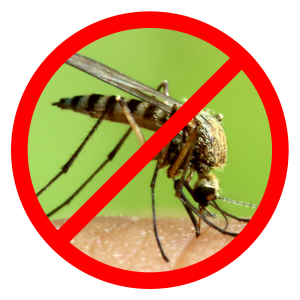Minimizing Disease Activity: Cultural Practice and Fungicides
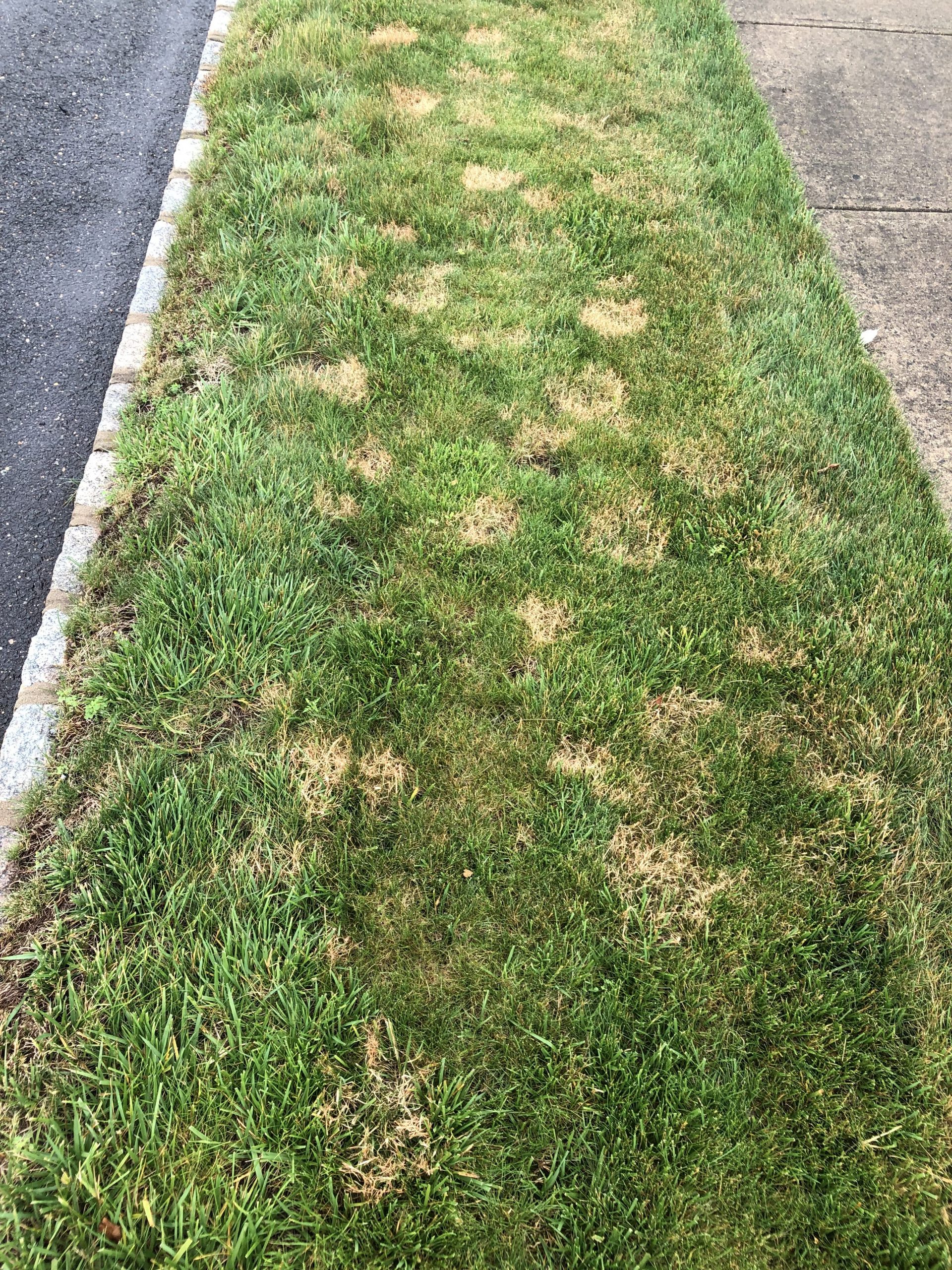
The grass on your property is sometimes easy to dismiss as just ground cover, or a playing surface, or even some sort of given amenity that comes with the purchase of a home. However, the reality is that the lawn is a living thing; and not only that, it is an entire population of living things. In fact, when considering the soil environment it inhabits, it is an entire ecosystem with millions of living organisms. Among the myriad of organisms that dwell under our feet disease pathogens reside. When conditions are favorable, microbial fungi populations cause lawn disease outbreak. This is when a lawn breaks out in disease activity.
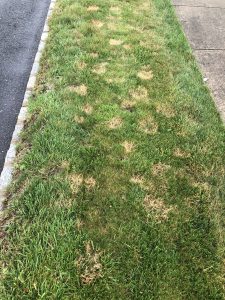
First, it is important to realize that the only plants affected by lawn diseases are desirable grass species, the same grass we spend a lot of time and money trying to maintain. Weeds such as dandelions, clover and crabgrass are not adversely affected by lawn diseases. Lawns without fertilization or irrigation are also much less likely to exhibit any issues with lawn disease. This is discouraging, because it means that only the lawns that are kept weed free, well-fed, and watered are the ones that can contract significant disease, while a not maintained lawn dodge this bullet altogether.
So, what does this mean? We should not try to maintain high quality lawns? Of course not, it just means that if you are going to have a premium lawn, you should consider the potential for disease activity.
Infections occur in lawns when the activity of the disease-causing fungi is higher than the activity of the lawn growth. The best defense against disease outbreak is creating an environment within the lawn that favors growth of turf and discourages fungal activity. Creating a favorable turf growth environment and a healthy soil ecosystem all happens through the initiation of good cultural practice techniques.
Core Aeration
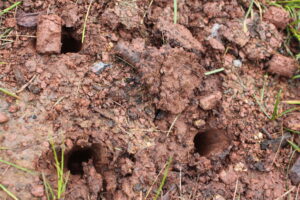
This photo demonstrates what core aeration plugs look like in the soil.
It pretty much goes without saying that human beings are wildly fond of oxygen. What you might not realize is that plants love this stuff just as much as we do because plant roots need oxygen to thrive. The problem is the oxygen is up here and the roots are buried, and in New Jersey they are buried in what is often compacted clay soil. Lawns grown in soil with high clay content need to be core aerated at least every-other-year if not annually in order to keep the micro pores at the soil surface open so that the soil remains as oxygenated as possible. This is super important in terms of the battle against lawn disease activity because not only does the grass love the oxygen, the pathogenic fungi hate it. Fungi that cause lawn disease thrives in low oxygen environments, so lawns with compacted soil are far more likely to suffer from disease than those aerated regularly.
Irrigation
Irrigating the lawn can be the most beneficial cultural practice in trying to promote a healthy lawn, or it’s the most serious detriment when done improperly. Plants need water just like we need water, but as previously mentioned plants also need oxygen. Whenever an environment has too much water and not enough available oxygen, plants (just like people) can potentially drown. This is the problem that can be brought on by improper irrigation. Clay soil, that we have in New Jersey, holds water very well, and it takes a while (usually a few days) for water to percolate down through the root zone of the lawn. If ample time is not given between irrigation cycles for the water to move out of the upper few inches of soil, the roots never have a chance to breath in any of the oxygen from the surface. This causes plant roots to become weak and promotes the low oxygen soil environment that the pathogens love. It is critical that when the lawn is irrigated it is done so deeply but not often, maybe once every third or fourth day. And if there are areas of the lawn that hold water longer than others due to partial shade or lower spots, they may require even less frequent irrigation. As a rule, no water should be added until whatever previous water introduced has had a chance to work its way deeper into the soil; this is typically a couple days, however largely depends on the weather.
Seeding
One of the most important cultural practices overlooked in the fight against lawn disease is seeding. Lawns that have been established for a long time probably have grass that is of lesser quality than more recently developed grass varieties. Turfgrass scientists are always hard at work trying to cross-breed new varieties of grass that are less susceptible to drought stress, traffic stress, insects and disease. Re-doing portions of the lawn with newer turf varieties can provide a lawn that is able to help itself a bit more and create a lower maintenance situation.
The Implications of Weather
Sometimes despite the best efforts to provide the most beneficial turf environment, a force much more powerful than human cultural practice can step in and create a very favorable disease environment…the weather. Periods of stressful, dry heat followed by rain or vice versa can cause full blown disease epidemics. When this happens, the best thing to do is call a professional lawn care service to have the lawn evaluated. A good lawn service agent should be able to not only diagnose the lawn disease correctly, but also consider all the conditions at a particular property and decide what the best course of action should be.
Fungicides
One of the things a professional may recommend as part of an action plan in response to lawn disease outbreak is applying a fungicide. Fungicides are very much like medicine for the disease. Once applied, fungicides keep the lawn disease activity down for anywhere between 2-4 weeks, which allows the lawn time enough to grow out the infected leaf tissue. What is important to realize when using fungicides is that they are not a cure. These treatments simply provide a window of disease inactivity, so that professionals and/or homeowners can promote the growth and recovery of the turf. It is also important to understand that while these products can be very effective, they are not always the answer. Like medicine, fungicides are expensive, so they are not going to be part of a professional recommendation unless the service provider is sure they are effective. You do not administer medicine after a sickness has run its course, do you? Similarly, a lawn care professional does not recommend a fungicide if the lawn disease would be subsiding naturally due to changes in weather, among other reasons.
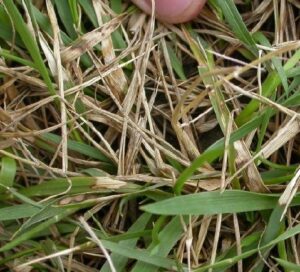
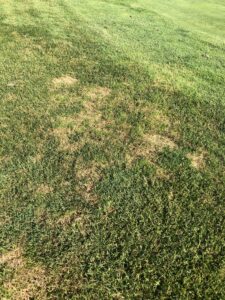
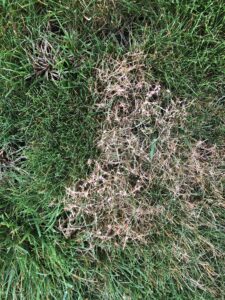
Fungicides can also serve as part of lawn disease prevention. Just like your doctor may prescribe medicine to take daily along with the right diet and exercise to thwart illness, in some cases a professional may decide that a regimen of fungicides added to the annual maintenance program to keep out lawn disease. A preventative fungicide program consists of several applications done periodically when the lawn disease targeted is most likely to occur. The timing and number of applications can vary a great deal depending on the disease you are aiming to controlled, the products used, and the budget allocated for the lawn. Again, fungicides are expensive and only work for 2-4 weeks at a time, so adding this type of service to the annual maintenance expense is not for everyone. Therefore, they are not included as part of any “standard” professional lawn maintenance plan offered to homeowners. While they are part of a standard golf course or sports turf regimen, preventative fungicide programs are generally reserved (if even offered at all) for only those residential properties where there is a documented history of disease year after year.
Conclusion
In the end, maintaining the long-term health of the soil and the grass through good cultural practice is always beneficial. After all, lawn diseases aren’t the only problems a lawn can face each year and keeping the lawn healthy always insures that it is more likely to recover from any number of issues. If serious disease outbreak occurs, or the lawn develops chronic issues with disease, a complete consultation with a knowledgeable lawn care professional may provide all the answers you’re looking for.
If you are in our service area, and have questions regarding disease activity on your property, you can request an estimate, or give our office a call at 908-281-7888.



